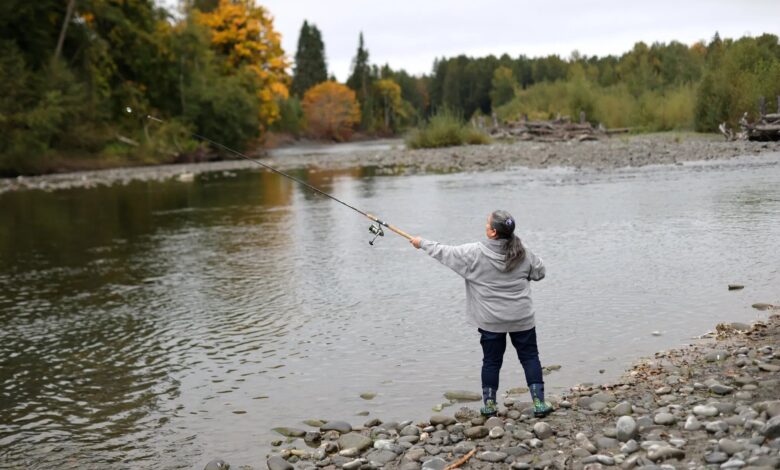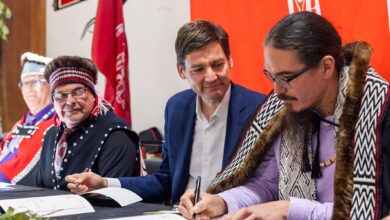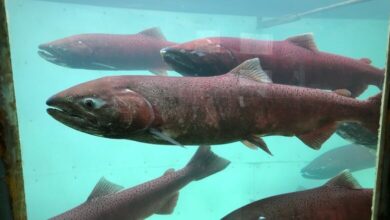
Frances Charles, the Lower Elwha Klallam tribal chair, fishes for coho salmon using a hook and line on the Elwha River on Monday, October 8, 2023. It was the tribe’s first fishery on an undammed river in more than 100 years. The subsistence fishery allows the tribe to catch just 400 coho salmon in the river. Photo Credit: Karen Ducey / The Seattle Times
AnimalsEnvironment USAFishing Got a Lot Easier for This Tribe
For the first time in over a century, members of the Lower Elwha Klallam Tribe in Washington, the United States, were able to fish coho salmon as their ancestors could on a free-flowing river for tribal and subsistence use.
“This completely filled my spirit to be back on the water again, to be able to exercise my treaty rights just as my ancestors did and fought for,” says Vanessa Castle, natural resources technician with the tribe. “It means everything to have that food security to know that I can catch a fish to feed my family. I know my ancestors were standing with us.”
In 1911, two dams blocking 145 km of river – more than 90% – were erected. In 2014, both the Elwha and Glines Canyon dams were demolished following two years of work. It was the largest dam removal project ever undertaken. While a broad fishing moratorium is still in place, the Lower Elwha Klallam Tribe could fish for coho salmon – just 400 out of a total run of 7,000 – and had immense meaning. In 2022, an estimated 6,821 coho returned to the river, the strongest recovery yet. About 36% of those fish were of natural origin, meaning they spawned in nature and not the hatchery.



